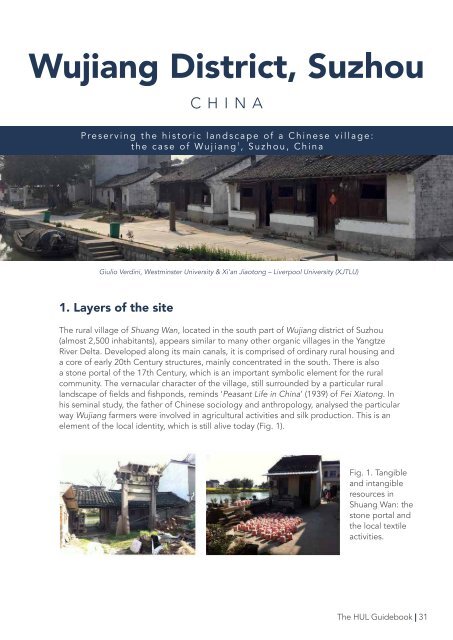GUIDEBOOK
wirey5prpznidqx
wirey5prpznidqx
You also want an ePaper? Increase the reach of your titles
YUMPU automatically turns print PDFs into web optimized ePapers that Google loves.
Wujiang District, Suzhou<br />
CHINA<br />
Preserving the historic landscape of a Chinese village:<br />
the case of Wujiang 1 , Suzhou, China<br />
Giulio Verdini, Westminster University & Xi’an Jiaotong – Liverpool University (XJTLU)<br />
1. Layers of the site<br />
The rural village of Shuang Wan, located in the south part of Wujiang district of Suzhou<br />
(almost 2,500 inhabitants), appears similar to many other organic villages in the Yangtze<br />
River Delta. Developed along its main canals, it is comprised of ordinary rural housing and<br />
a core of early 20th Century structures, mainly concentrated in the south. There is also<br />
a stone portal of the 17th Century, which is an important symbolic element for the rural<br />
community. The vernacular character of the village, still surrounded by a particular rural<br />
landscape of fields and fishponds, reminds ‘Peasant Life in China’ (1939) of Fei Xiatong. In<br />
his seminal study, the father of Chinese sociology and anthropology, analysed the particular<br />
way Wujiang farmers were involved in agricultural activities and silk production. This is an<br />
element of the local identity, which is still alive today (Fig. 1).<br />
Fig. 1. Tangible<br />
and intangible<br />
resources in<br />
Shuang Wan: the<br />
stone portal and<br />
the local textile<br />
activities.<br />
The HUL Guidebook | 31


